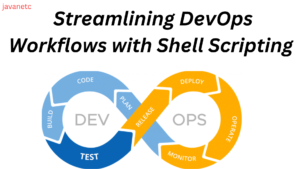Introduction
In the realm of software development, DevOps has become a prominent approach for integrating development and operations teams to streamline application building and deployment. Configuration files play a crucial role in DevOps, defining infrastructure, deployments, and other aspects of the development pipeline.
YAML (Yet Another Markup Language) is a widely embraced human-readable data serialization language in DevOps. Its versatility, lightweight nature, and readability make it a preferred choice for various DevOps tasks, gaining popularity due to its simplicity and flexibility.
This article explores the position of YAML in DevOps, beginning with an outline of syntax and facts structures. It delves into common tools used with YAML in DevOps, highlights the benefits over other formats, and outlines best practices. Real-world use cases demonstrate how YAML streamlines workflows and enhances infrastructure management.
Table of YAML for DevOps
YAML Syntax
YAML, a human-readable data serialization format, is extensively used for configuration files in DevOps. Its minimal and easily understandable syntax is exemplified below:
name: John Doe
age: 30
gender: male
is_student: false
hobbies:
- reading
- hiking
- cooking
address:
street: 123 Main St
city: New York
state: NY
zip: 10001
Supporting various data types, including strings, numbers, booleans, lists, and dictionaries, YAML’s flexibility and readability make it ideal for DevOps configuration files.
YAML for DevOps Tools
Several YAML tools are commonly employed in DevOps for configuration management, deployment, and automation. Notable examples include:
- Ansible: An open-source automation tool utilizing YAML for IT workflow automation.
- Kubernetes: A box orchestration platform that makes use of YAML to outline and control box applications.
- Jenkins: An open-source CI/CD server employing YAML for declarative pipeline definitions.
- Terraform: An IaC tool using YAML to specify infrastructure resources.
- SaltStack: A configuration management tool utilizing YAML for IT workflow automation.
- Docker Compose: A tool for creating multi-container Docker applications using YAML files.
YAML’s adaptability and ease of comprehension render it an optimal selection for delineating and automating IT workflows.
Benefits of YAML for DevOps
YAML provides several benefits for DevOps teams. Its straightforward syntax enhances readability, making it easier for developers and team members to create and manage configuration files. The example below illustrates YAML’s readability compared to JSON:
YAML:
name: John Doe
age: 30
gender: male
is_student: false
hobbies:
- reading
- hiking
- cooking
address:
street: 123 Main St
city: New York
state: NY
zip: 10001
JSON:
{
"name": "John Doe",
"age": 30,
"gender": "male",
"is_student": false,
"hobbies": ["reading", "hiking", "cooking"],
"address": {
"street": "123 Main St",
"city": "New York",
"state": "NY",
"zip": 10001
}
}
YAML’s flexibility allows DevOps teams to create highly customizable and reusable configurations. Compared to other formats like JSON and XML, YAML’s advantages include readability, comments, whitespace, and less verbosity.
Use Cases YAML in DevOps
YAML serves various purposes in DevOps:
- Defining Infrastructure: YAML is commonly used for Infrastructure as Code (IaC), defining components such as VMs, networks, and storage.
- Describing Deployments: YAML describes application deployments, specifying configurations, dependencies, and environment variables.
- Configuring Pipelines: YAML configures CI/CD pipelines, automating processes for building, testing, and deploying applications.
- Secrets Storage: YAML securely stores secrets like API keys and passwords, ensuring restricted access.
- Process Documentation: YAML documents DevOps processes, aiding teams in understanding and enhancing their procedures.
Best Practices for YAML in DevOps
When working with YAML in DevOps, follow these best practices:
- Version Control: Use Git for version control, employ branching strategies, write descriptive commit messages, and use pull requests for code review.
- Code Review: Review code changes before merging, utilize code review tools, and ensure readability, maintainability, and adherence to standards.
- Linters and Validators: Employ YAML linters and online validators to catch syntax errors and formatting issues.
- Clean and Maintainable Code: Use consistent indentation, avoid long lines, add comments, and use meaningful variable names for readability.
Below is an example of properly formatted and commented YAML code:
# Define environment variables
env:
DB_HOST: db.example.com
DB_PORT: 3306
DB_USER: admin
DB_PASSWORD: password123
# Define services
services:
web:
image: nginx
ports:
- "80:80"
db:
image: mysql
environment:
MYSQL_ROOT_PASSWORD: password123
MYSQL_DATABASE: test_db
Following these best practices ensures that YAML code in DevOps is maintainable, easy to work with, and troubleshoot.
Conclusion
YAML, a human-readable data serialization format, plays a crucial role in DevOps, offering benefits such as ease of use, readability, and flexibility. It finds applications in defining infrastructure, describing deployments, configuring pipelines, and more. Best practices, including version control, code review, and clean coding, ensure effective use of YAML in DevOps. Compared to other formats, YAML stands out for its readability and versatility, making it a preferred choice in the DevOps landscape.



